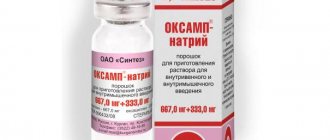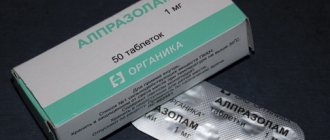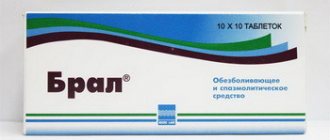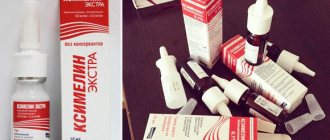Chemical properties
The chemical formula of Sodium bromide is NaBr, the compound has a molecular weight = 102.9 g per mole. According to the Pharmacopoeia, this is an inorganic compound. Salt has the appearance of white, colorless crystals, odorless, and salty taste. The crystals dissolve well in water and less well in alcohol. For medical use, a pre-sterilized (for half an hour) solution of Sodium bromide with a pH of 6 to 7 is used. At the end of the 19th century, the substance began to be used as a sedative and anticonvulsant. It should be noted that another compound, Potassium Bromide, is more effective (and toxic). It is now used exclusively in veterinary practice.
The era of Bekhterev's medicine
Sodium bromide was first used for therapeutic purposes in the second half of the 19th century for the treatment of seizures in epilepsy. At that time, the mechanism of action of bromine was not studied, and bromides were used empirically on the principle of “it helps - and that’s okay.” Several years after the start of use, safe doses were calculated. Bromine and its compounds have proven effective not only against seizures, but also against cardiovascular and nervous diseases. Bromine began to be combined with various substances, achieving its maximum effectiveness. The most famous drug of that time was Bekhterev's mixture, in which sodium bromide was combined with cardiac glycoside and opium alkaloid - codeine. Patients receiving Bekhterev's mixture calmed down, their sleep improved and their heart function evened out.
However, the effectiveness of bromine drugs in epilepsy has been controversial. Yes, the general condition of the patients improved, but bromine did not have a significant effect on the most important component of the disease - the frequency and severity of convulsive attacks.
The finished mixture is stored for no more than 3 days. Previously, it was produced directly in pharmacies. However, since 2012, all drugs containing codeine are subject to number registration. In addition, the manufacture of medicines in pharmacies is associated with great technological and legislative difficulties, so at present Bekhterev's mixture is practically not produced anywhere.
Instructions for use Sodium bromide (method and dosage)
Sodium bromide solution for adult patients is usually prescribed in a dosage of 0.1-1 g three to four times a day. For children under one year of age, the drug is usually prescribed at a dosage of 50-100 mg, for children under two years of age - at a dosage of 150 mg, for children aged three to four years - at a dosage of 200 mg, for children aged five to six years. - at a dosage of 250 mg, for children from seven to nine years old - 300 mg of the drug, and for children ten to fourteen years old - up to 500 mg of the drug orally.
For epilepsy, the initial dose of the drug should be 1-2 g per day. The dose is gradually increased by 1-2 g every week. The maximum permissible dose in this case is 6-8 g. During treatment, it is recommended to reduce the consumption of table salt to 5-10 g per day, provided that it is used in a dosage of 4-5 g. This will help to significantly increase the therapeutic effect of taking the drug.
When treating children, you can use a special recipe for sodium bromide. The recipe involves diluting a 1-3% solution with fruit syrup. Children under one year of age should be given 5 ml of solution, children under two years of age - 10 ml, children aged three to six years - 15 ml, children aged seven to nine years - 22.5 ml, and children aged aged ten to fourteen years – 30 ml of the drug three times a day.
Sodium bromide
Do you know that:
The liver is the heaviest organ in our body. Its average weight is 1.5 kg.
It was previously believed that yawning enriches the body with oxygen. However, this opinion has been refuted. Scientists have proven that yawning cools the brain and improves its performance.
Our kidneys are capable of purifying three liters of blood in one minute.
The human brain weighs about 2% of the total body weight, but it consumes about 20% of the oxygen entering the blood. This fact makes the human brain extremely susceptible to damage caused by a lack of oxygen.
A person taking antidepressants will, in most cases, become depressed again. If a person has coped with depression on his own, he has every chance to forget about this condition forever.
There are very interesting medical syndromes, for example, compulsive swallowing of objects. One patient suffering from this mania had 2,500 foreign objects in her stomach.
American scientists conducted experiments on mice and came to the conclusion that watermelon juice prevents the development of vascular atherosclerosis. One group of mice drank plain water, and the second group drank watermelon juice. As a result, the vessels of the second group were free of cholesterol plaques.
The average life expectancy of left-handers is shorter than that of right-handers.
Many drugs were initially marketed as medicines. Heroin, for example, was originally brought to market as a cure for children's coughs. And cocaine was recommended by doctors as an anesthesia and as a means of increasing endurance.
Four pieces of dark chocolate contain about two hundred calories. So if you don’t want to gain weight, it’s better not to eat more than two slices a day.
In the UK there is a law according to which a surgeon can refuse to perform an operation on a patient if he smokes or is overweight. A person must give up bad habits, and then, perhaps, he will not need surgical intervention.
According to many scientists, vitamin complexes are practically useless for humans.
The well-known drug Viagra was originally developed for the treatment of arterial hypertension.
Human blood “runs” through the vessels under enormous pressure and, if their integrity is violated, it can shoot at a distance of up to 10 meters.
Each person has not only unique fingerprints, but also tongue prints.
Side effects
Sodium bromide solution may cause lethargy and skin rashes. In some cases, patients experience the following side effects: memory impairment, cough, conjunctivitis and rhinitis. If undesirable side effects occur, a sodium chloride solution should be administered in a dosage of 10-20 g per day to eliminate them. In this case, drink plenty of fluids in a volume of 3-8 liters per day. It is necessary to monitor constant bowel movements, constantly rinse your mouth and wash your skin. As noted above, you should limit your consumption of table salt.
Contraindications
Despite their apparent harmlessness, sodium bromide preparations cannot be used if there is damage to those organs through which the substance is excreted and on which it acts. This means that if the kidneys, liver, or respiratory system have insufficient function, the drug is contraindicated. In addition, the drug is harmful for hypotension, depression, atherosclerosis and anemia.
With prolonged use or exceeding the maximum permissible dosage, bromism phenomena or signs of oversaturation of the body with bromine may develop. This condition is manifested by general lethargy, decreased memory, runny nose and cough, inflammation of the mucous membranes of the eyes, as well as a special skin rash. These side effects can be eliminated by drinking plenty of fluids or intravenous drip administration of a large amount - 10 or even 20 g / day - of sodium chloride. The total volume of fluid administered and drunk can reach up to 8 l/day.
pharmachologic effect
Due to its ability to stimulate inhibition processes in the cerebral cortex, this drug has a sedative effect. Sodium bromide effectively eliminates seizures and also normalizes the balance between the processes of excitation and inhibition. Thus, this remedy is especially effective for increased excitability of the nervous system.
The drug is absorbed from the gastrointestinal tract. Removing sodium bromide from the body takes a fairly long period of time. The drug is excreted through the work of the sweat glands, kidneys, mammary glands and intestines. The maximum concentration of the drug in the blood twelve days after taking the drug is reduced by half.
Dosage for children
Depends on the age of the child, but can be adjusted by the doctor. The drug is given 3 times a day, always after meals. Single doses are:
- Up to 1 year – 1 teaspoon.
- Up to 2 years – 1 dessert spoon.
- Up to 4 years – 1.5 dessert spoons.
- Up to 6 years – 1 tablespoon.
- Up to 9 years – 1.5 tablespoons.
- Up to 14 years – 2 tablespoons.
The average course duration is from 2 to 4 weeks. However, in case of hyperkinesis, the course can be extended by the doctor to two months. A prerequisite is good tolerability of the drug.
Bromine and its compounds have withstood competition with modern drugs and are now known as harmless and quite effective agents.
Properties
The reagent is a hygroscopic, white, odorless, fine-crystalline powder with a salty taste. Water-soluble, forms a crystalline hydrate with two water molecules NaBr∙2H2O. Soluble in ethyl and methyl alcohols, liquid ammonia, glycerin, pyridine. Sensitive to light. Very refractory, melts at 747 °C. Non-toxic.
Sodium bromide reacts with strong acids, releasing hydrogen bromide gas. By reaction with chlorine gas, bromine can be obtained.
| Reagent jar 100 ml dark glass | Sodium bromide | Dark glass jar, wide mouth, 1 liter |
Composition, release form and packaging
The drug Sodium bromide is produced in several pharmaceutical forms:
- In the form of a solution of 5%, 10% and 20%, indicated for oral administration.
A cardboard pack contains 10 ml ampoules.
- In powder form, white crystalline, salty taste, odorless, easily soluble in ethanol and water, hygroscopic.
In a cardboard pack - 5 g and 10 g of sodium bromide.
- In the form of tablets.
Active ingredients: 1 tablet - 0.5 g and 0.15 g of sodium bromide.
In a cardboard pack there is a blister with 12 tablets.
Pharmacokinetics
Sodium bromide is actively absorbed from the gastrointestinal tract, a few minutes after administration it is fixed in saliva, urine, etc. There is a high concentration of sodium bromide in the intercellular fluid and blood plasma.
Twelve days after taking the drug, the maximum concentration of the drug is reduced by half. T1/2 - 12 days, and 10% of the dose is released on the first day. It is excreted from the body for quite a long time, through the sweat and mammary glands, by the kidneys, intestines, and also through the stomach, where hydrobromic acid is detected along with hydrochloric acid. Replaces an equivalent amount of chlorine in body tissues.
Side effects
Side effects when using sodium bromide are possible:
Common to all forms:
- phenomena of bromism (bromine poisoning) - drowsiness, weakness, lethargy, general lethargy, ataxia, blurred vision, hearing, slowed speech, apathy, weakened memory, inflammation and irritation of the mucous membranes (cough, runny nose, diarrhea, conjunctivitis, bronchitis), skin rash ;
- gastralgia,
- gastroenterocolitis;
- bradycardia;
- allergic reactions.
Solution:
- skin rash;
- lethargy;
- rhinitis;
- conjunctivitis;
- cough;
- memory impairment
At the first symptoms of side effects, sodium chloride solution should be administered in a dosage of 10-20 g per day. It is recommended to drink plenty of fluids per day from three to eight liters.
Drug interactions
When sodium bromide is used together with other drugs, the following is observed:
- enhancing the analgesic effect of narcotic analgesics.









